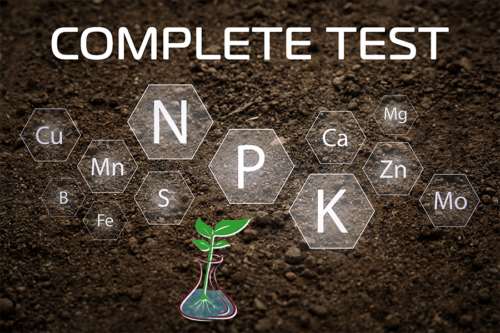Exchangeable Calcium
The surface of an individual clay particle or organic colloid is negatively (-) charged. As a consequence their surfaces attract and adsorb positively charged ions called cations. When water is added to soil, cations can move into solution, however, they are still attracted to the clay particle or organic colloid surface and as a result swarm around them.
Calcium is a macronutrient as it is required in large amounts by plants.The role and function of calcium in plants is wide a varied and includes; stimulation of root and shoot growth and development, activation of plant enzymes, and neutralizes organic acids in plant cells.
Calcium is also needed by plants to strengthen cell walls. Where plants have insufficient calcium, cell walls and membranes will weaken and disintegrate, leading to increased disease, fruit rotting, and postharvest problems.
Fortunately, calcium is the most plentiful cation occupying 70% or more of the sites on the cation exchange complex of soil that is neutral to slightly acidic. The total quantity of calcium is generally found in four pools:
- Adsorbed onto clay particles and the cation exchange complex of humus (Exchangeable Ca)
- Complexed with humus,
- Primary mineral structures (Structural Ca), and
- Secondary minerals.
In the majority of soil types, calcium is available for plant uptake from either exchangeable calcium or calcium in readily weatherable secondary minerals. A significant source of calcium from weatherable secondary minerals is calcite (CaCO3) found in limestone or other calcareous parent material.
Calcite, also known as lime, is commonly added to soil to ameliorate acid soil conditions because it will dissolve to form acid-neutralizing constituents and also provide a source of calcium.
In soil that has not been significantly weathered (e.g. arid and semi-arid areas) calcium is also present in gypsum (CaSO4.2H2O). Gypsum is often supplied in order to improve soil physical properties where exchangeable sodium exceeds 10 to 15% of the cation exchange capacity (CEC).
Calcium is also found in the silt particle size fraction. This is particularly the case in alluvial sediments high in feldspars and carbonates.
Calcium is adsorbed very strongly as compared with most exchangeable cations. The reason for this is because it is divalent (i.e. +2 charge) and it has a small hydrated radius. The double positive charge of the calcium ion also leads to greater attraction between negatively charged clay particles or organic colloids. This is because each positive charge can bind to two individual clay particles and/or organic colloids.
In addition, and because the calcium ion does not hydrate as strongly as sodium or magnesium ions, calcium is held much closer to the clay particle or organic colloid surface and consequently with greater attraction. These are the reasons why calcium in the form gypsum (i.e. calcium sulphate) is applied in order to improve the structure of soil which is sodic (i.e. ESP > 6 %).
Exchangeable calcium is the amount of calcium ions that occupy cation exchange sites in the cation exchange complex relative to the valence of calcium.
|
Exchangeable |
Unit |
Very low |
Low |
Moderate |
High |
Very High |
|
Calcium |
cmol(+)/kg |
<2 |
2-5 |
5-10 |
10-20 |
>20 |



